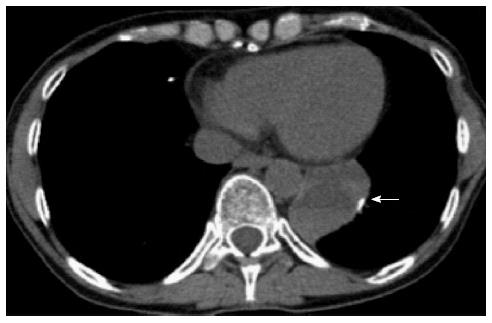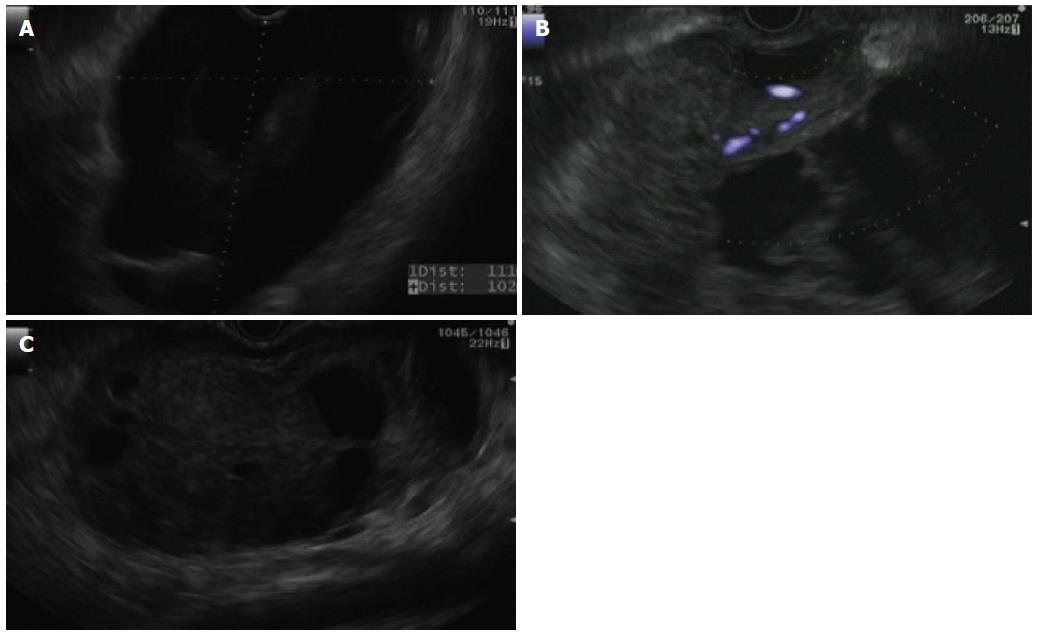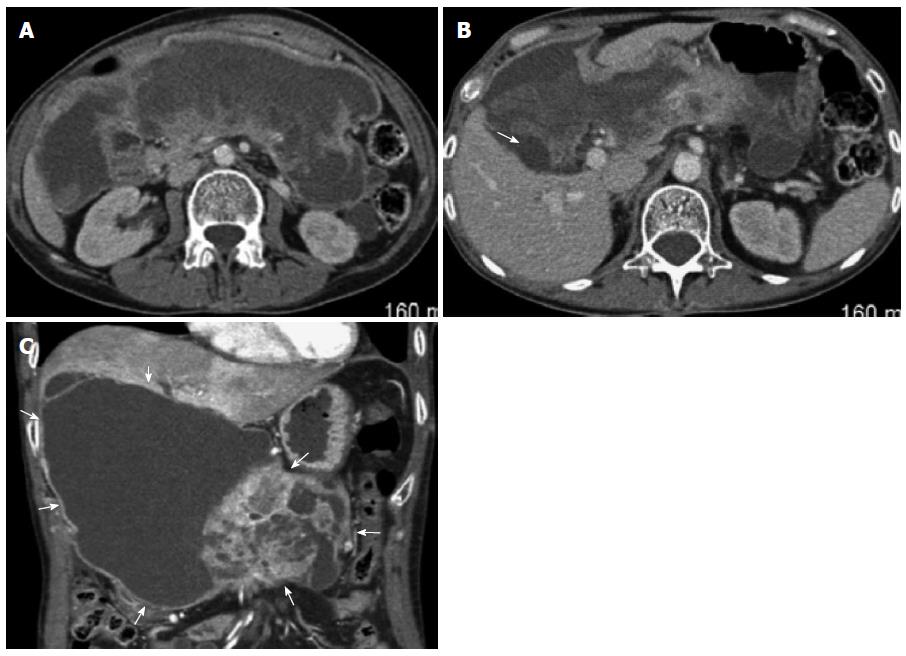Copyright
©The Author(s) 2015.
World J Gastroenterol. Jul 21, 2015; 21(27): 8452-8457
Published online Jul 21, 2015. doi: 10.3748/wjg.v21.i27.8452
Published online Jul 21, 2015. doi: 10.3748/wjg.v21.i27.8452
Figure 1 Non-contrast chest computed tomography demonstrates a round mass in the left inferior paramediastinal-pleural region with heterogeneous density (arrow).
There is surgical hyperdense material seen at the margin of the round mass and right anterior lung region, which was from prior metastases resection.
Figure 2 Endoscopic ultrasound imaging.
A: Showing a large pancreatic cystic mass in the head/genu of the pancreas; B: Showing blood flow within solid components of the pancreatic mass (blue Doppler flow); C: Showing decompression of the pancreatic cystic lesion with residual solid component.
Figure 3 Post-contrast venous phase abdominal computed tomography.
A: Demonstrating a large (20 cm × 6 cm × 12 cm) abdominal mass with peripheral rim enhancement as well as some areas of thickened nodular enhancement in the periphery. There is a wispy enhancing area of probable pancreatic tissue in the posterior mid aspect of the mass in the expected location of the pancreatic neck, body and proximal tail. The portal splenic confluence and downstream SMV are inseparable from the mass; B: The cystic mass abuts the liver at the gallbladder fossa, and surrounds the gallbladder (arrow); C: Coronal reconstruction. Giant cystic-predominant mass (arrows) extends from the hepatic hilum, and surrounds the gallbladder.
- Citation: Akpinar B, Obuch J, Fukami N, Pokharel SS. Unusual presentation of a pancreatic cyst resulting from osteosarcoma metastasis. World J Gastroenterol 2015; 21(27): 8452-8457
- URL: https://www.wjgnet.com/1007-9327/full/v21/i27/8452.htm
- DOI: https://dx.doi.org/10.3748/wjg.v21.i27.8452











